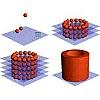Invention Help

For most inventors the first step in the invention process is to get help in protecting their idea.
The second step is getting financing.
But the first step is actually proving your invention is valuable otherwise protection and investment isn't going to occur.
An idea or invention is only valuable to the extent that others agree that it can make money.
If your invention can make money then it is valuable and worth protecting against competition.
But people are not going to agree that your invention is valuable just because you say so.
To be a successful inventor is comparable to driving your car to a destination. To get there requires a car, knowing how to drive, and how to get to where you want to go.
When you drive a car, you operate and coordinate a number of related functions. You can't drive a car only knowing how to steer and use the accelerator.
You can't bring your invention to market by just making some phone calls.
Coordinating Functions
You need to know other functions and you need to understand the rules so you don't bang into anything or anyone.
If your car is not defective and you know how to drive, and understand the rules of the road - then your chances of arriving at your destination are pretty good.
This becomes easier as you gain experience just as it does with inventing.
Although for most of us, jumping into a car and going somewhere is routine - it is only because we have done it so often that it becomes relatively simple.
But if we could find someone who had never seen or heard of a car - someone who didn't have any familiarity with the subject at all - they would probably find the whole thing very complicated and magical.
They would probably think that the whole subject of cars and driving them was highly skilled - and it is.
But it is not that complicated that it cannot be learned. You can learn how to successfully commercialize inventions.
Invention Help
 You have to coordinate a number of functions that are interconnected and related to your invention.
You have to coordinate a number of functions that are interconnected and related to your invention.
You begin with searching the patent data base to find inventions similar to your own. You would find out if these inventions are being manufactured, distributed and sold.
You would develop your invention so it was not similar to anyone else's patent. You would see what companies are the assignees of similar inventions.
You would collect information about these companies - their finances, products, manufacturing capabilities, access to resources, competition and market share.
It is not that difficult to get this type of information.
You want to keep records of this research in an inventor log and compile information for your business plan.
You would have a patent lawyer conduct a thorough search regarding your invention and use the results to plan a patent application.
You would design and structure your invention according to a patent plan and would construct a functional prototype.
You would determine the materials, processes and costs involved to make your product.
You would research packaging, shipping, promotion, marketing and related costs.
You would forecast sales and trends based upon comparable products. This may not be precise, or definite, but the reason you do it is because it prepares you to talk to someone who may be interested in your invention.
All of this is done with one purpose in mind - to make money for yourself and your associates.
The whole idea is that you are trying to help somebody make a lot of money with your invention. You're not trying to find somebody to give you a lot of invention help and money because you're smart and creative.
The Test
The more confidence you can give others about the profitability of your invention - the better chance you have of being successful.
The test is this - would anyone invest in your invention given the information you provide them.


|
| New handheld device can identify you by scanning the veins in your hands. |

|
| New technology can build human veins and organs. |



